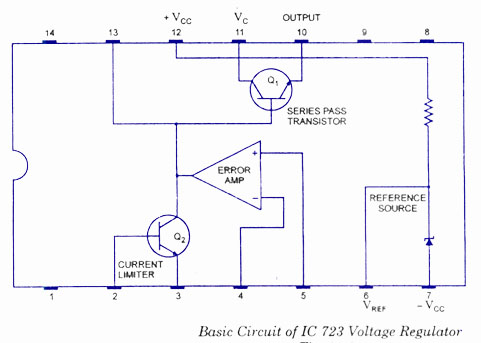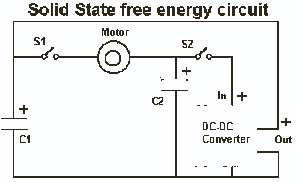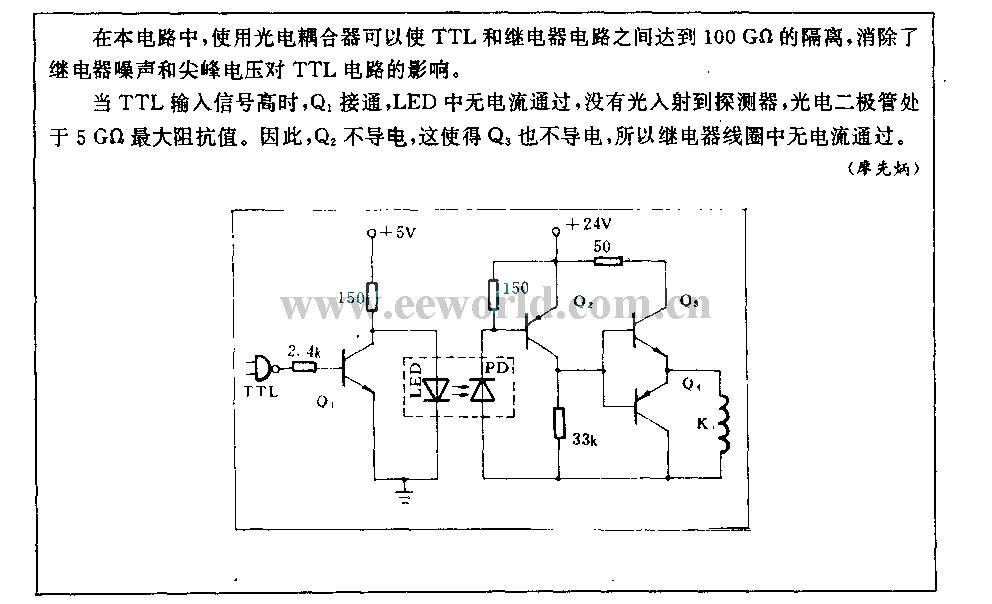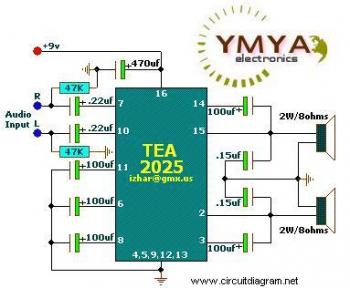
Vibration Detector Circuit
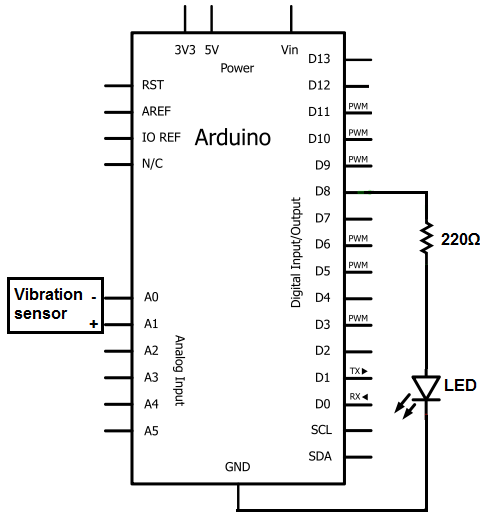
The sensors consist of a thin strip of piezoelectric material with a rivet at one end acting as a weight. When vibration occurs, the weight moves, stressing the piezo material, which generates a spike in voltage that can reach up to 90V. This vibration sensor will be connected to an Arduino, which can read and detect the voltages produced by the sensor during vibrations. The analog terminal of the Arduino offers resistance that will bring the voltages down to safe levels, preventing any harm to the Arduino board. When the Arduino detects a vibration above a certain threshold value, an LED connected to it will light up for one second before turning off. This circuit is commonly used for impact sensing or as a flexible switch. If the piezo sensor is flexed, a significant voltage can activate a transistor, SCR, or other switching devices. The piezo vibration sensor is from MEAS and can be purchased from various online retailers for under $5. The two pins will be connected to the analog terminals A0 and A1 of the Arduino board. One pin will be set to LOW, representing ground, while the other will be the sense pin, which detects vibrations in the sensor's vicinity. The piezo sensor connects to the Arduino at A0 and A1, with A0 configured as ground and A1 as the positive sense pin. The anode of the LED will connect to digital pin 13 of the Arduino, while the cathode will connect to ground. No external resistor is required for the LED, as digital pin 13 has built-in resistance. The Arduino will connect to a computer via USB, with a Type A connector for the computer and a Type B connector for the Arduino. The first block of code defines the pin connections: the ground pin of the sensor is connected to A0, the sense pin to A1, and the LED pin to digital pin D13. The second block defines a variable called threshold, which is crucial as it represents the analog level at which the LED will turn on. The Arduino can measure analog values from 0 to 1023, and the threshold is set to 500, meaning the LED activates when vibrations reach this level or higher. This value can be adjusted based on the desired sensitivity. The third block of code sets A0 as the ground pin and declares it LOW. The LED pin is declared as an output. The line Serial.begin(9600) allows for monitoring the sensor readings via serial output if desired. The fourth block contains the loop() function, where the reading variable measures the voltage on the sense pin (A1). If the reading exceeds the threshold, the LED is activated; otherwise, it remains off. This setup ensures the LED only turns on for significant vibrations. Adjusting the threshold allows customization for different sensitivity requirements. This circuit demonstrates how a vibration sensor integrates with an Arduino board, with the LED illuminating for one second upon detecting vibrations above the threshold. Variations of this circuit can be implemented according to specific needs, such as replacing the LED with a buzzer or fan, allowing for diverse applications.The sensors are a thin strip of piezoelectric material with a rivet in the end acting as a weight. When there is a vibration, the weight moves, stressing the piezo material that produces a spike in voltage. This voltage that is created may be up to 90V. We are going to connect this vibration sensor to an arduino which can read and detect these vol tages that the sensor creates when there is vibration. With the resistance which an analog terminal of an arduino offers, these voltages of up to 90V will be brought to safe levels that will not harm the arduino board. When the arduino detects vibration, the LED connected to it will light up for a second and then turn off with each vibration above a certain threshold value.
This circuit is used often for impact sensing or as a flexible switch. If the piezo sensor is flexed, a large voltage will be created which can switch on a transistor, SCR, or any other type of switching device. The piezo vibration sensor is from the company MEAS. It can be obtained from a number of online retailers for a very low price (under $5). Follow this link to the piezo sensor offered by Sparkfun- Sparkfun- Piezo vibration sensor. We will connect the 2 pins to analog terminal A0 and A1 of the arduino board. We will then in our code set one to LOW, representing ground, while the other pin will be the sense pin, which will sense for any vibrations that are made in the sensor`s vicinity.
The piezo sensor works very well with the arduino. It 2 pins simply go into analog terminal A0 and A1 of the arduino. A0 will be configured to be ground and A1 will be the positive sense pin of the vibration sensor. This pin will detect whether there is any vibration or not. The LED`s positive pin (the anode) will go into digital pin 13 of the arduino and the negative or ground lead (the cathode) will be connected to ground. No resistor needs to be connected in series with the LED because digital pin 13 has built-in resistance.
Therefore, there is enough resistance intrinsically to limit current going to the LED, such that no external resistor is necessary. Now that we have our circuit setup, we now just need to connect the arduino to a computer via a USB. The type A connector goes into the computer and the type B goes into the arduino. The first block of code defines the pin connections. The ground pin (of the sensor) will be put in A0 of the arduino. The sensepin will be placed in A1. And the LEDPin will be placed in digital pin D13. The second block of code defines a variable called threshold. This is a very important variable because it represents the analog level at which the LED will be triggered to turn on.
The arduino can detect and measure analog values from 0 to 1023. We created it so that once an analog sound vibration reaches 500 or greater, the LED will be triggered on. You can modify this value to be less or greater depending on the amplitude of the vibration you want to be the trigger point.
However, a value near 500 is good for all practical purposes. If you lower the threshold value, then the circuit will detect vibrations easier. If you raise the threshold value, the circuit will need greater vibrations in order to trigger. The third block of code sets up the A0 terminal as the ground pin. It must be set as output and then declared LOW in order to function as a ground. This serves as the ground for the negative lead of the piezo sensor. The LEDPin serves as a digital output pin for the LED we connect to D13, so it must be declared output. We put the line Serial. begin(9600) so that if we want, you can see the values that the arduino is reading from the sensor if you had the line Serial.
println(reading), for testing purposes. The fourth block of code is the loop() function. The reading variable measures the actual voltage on the sensePin of the vibration sensor, which is the positive terminal connected to A1. If the reading is larger than the threshold value, the LED will be triggered to high and turned on. If not, it does not turn on. With this code, we only turn the LED on when the vibration is a large enough amount. If you want, you can set the threshold to a higher amount, so that the LED only turns on for a greater impact force to the sensor.
Play around with this to suit your needs. And this is how a vibration sensor works integrated with an arduino board. With this circuit, the LED will turn on for a second with each vibration above the given threshold and then turn off. Again, several variations of this circuit can be done to fit your needs. Maybe you don`t want an LED to light when vibration is detector. Maybe you want a buzzer to sound. In that case, you replace the LED with a buzzer. Maybe you don`t want a buzzer. You want a fan to go off. There are many ways the circuit can operate. Customize according to your needs. 🔗 External reference
This circuit is used often for impact sensing or as a flexible switch. If the piezo sensor is flexed, a large voltage will be created which can switch on a transistor, SCR, or any other type of switching device. The piezo vibration sensor is from the company MEAS. It can be obtained from a number of online retailers for a very low price (under $5). Follow this link to the piezo sensor offered by Sparkfun- Sparkfun- Piezo vibration sensor. We will connect the 2 pins to analog terminal A0 and A1 of the arduino board. We will then in our code set one to LOW, representing ground, while the other pin will be the sense pin, which will sense for any vibrations that are made in the sensor`s vicinity.
The piezo sensor works very well with the arduino. It 2 pins simply go into analog terminal A0 and A1 of the arduino. A0 will be configured to be ground and A1 will be the positive sense pin of the vibration sensor. This pin will detect whether there is any vibration or not. The LED`s positive pin (the anode) will go into digital pin 13 of the arduino and the negative or ground lead (the cathode) will be connected to ground. No resistor needs to be connected in series with the LED because digital pin 13 has built-in resistance.
Therefore, there is enough resistance intrinsically to limit current going to the LED, such that no external resistor is necessary. Now that we have our circuit setup, we now just need to connect the arduino to a computer via a USB. The type A connector goes into the computer and the type B goes into the arduino. The first block of code defines the pin connections. The ground pin (of the sensor) will be put in A0 of the arduino. The sensepin will be placed in A1. And the LEDPin will be placed in digital pin D13. The second block of code defines a variable called threshold. This is a very important variable because it represents the analog level at which the LED will be triggered to turn on.
The arduino can detect and measure analog values from 0 to 1023. We created it so that once an analog sound vibration reaches 500 or greater, the LED will be triggered on. You can modify this value to be less or greater depending on the amplitude of the vibration you want to be the trigger point.
However, a value near 500 is good for all practical purposes. If you lower the threshold value, then the circuit will detect vibrations easier. If you raise the threshold value, the circuit will need greater vibrations in order to trigger. The third block of code sets up the A0 terminal as the ground pin. It must be set as output and then declared LOW in order to function as a ground. This serves as the ground for the negative lead of the piezo sensor. The LEDPin serves as a digital output pin for the LED we connect to D13, so it must be declared output. We put the line Serial. begin(9600) so that if we want, you can see the values that the arduino is reading from the sensor if you had the line Serial.
println(reading), for testing purposes. The fourth block of code is the loop() function. The reading variable measures the actual voltage on the sensePin of the vibration sensor, which is the positive terminal connected to A1. If the reading is larger than the threshold value, the LED will be triggered to high and turned on. If not, it does not turn on. With this code, we only turn the LED on when the vibration is a large enough amount. If you want, you can set the threshold to a higher amount, so that the LED only turns on for a greater impact force to the sensor.
Play around with this to suit your needs. And this is how a vibration sensor works integrated with an arduino board. With this circuit, the LED will turn on for a second with each vibration above the given threshold and then turn off. Again, several variations of this circuit can be done to fit your needs. Maybe you don`t want an LED to light when vibration is detector. Maybe you want a buzzer to sound. In that case, you replace the LED with a buzzer. Maybe you don`t want a buzzer. You want a fan to go off. There are many ways the circuit can operate. Customize according to your needs. 🔗 External reference
Warning: include(partials/cookie-banner.php): Failed to open stream: Permission denied in /var/www/html/nextgr/view-circuit.php on line 713
Warning: include(): Failed opening 'partials/cookie-banner.php' for inclusion (include_path='.:/usr/share/php') in /var/www/html/nextgr/view-circuit.php on line 713
